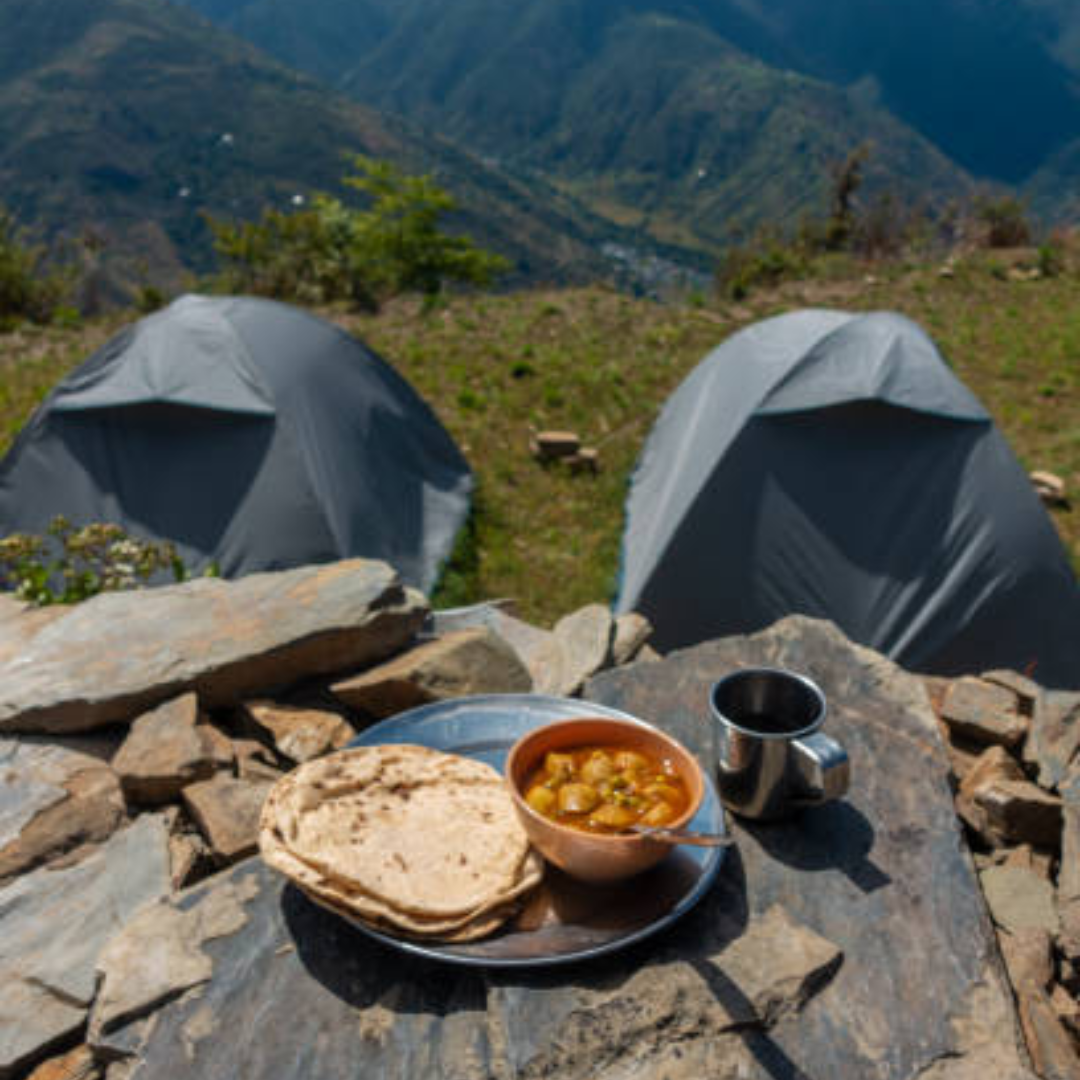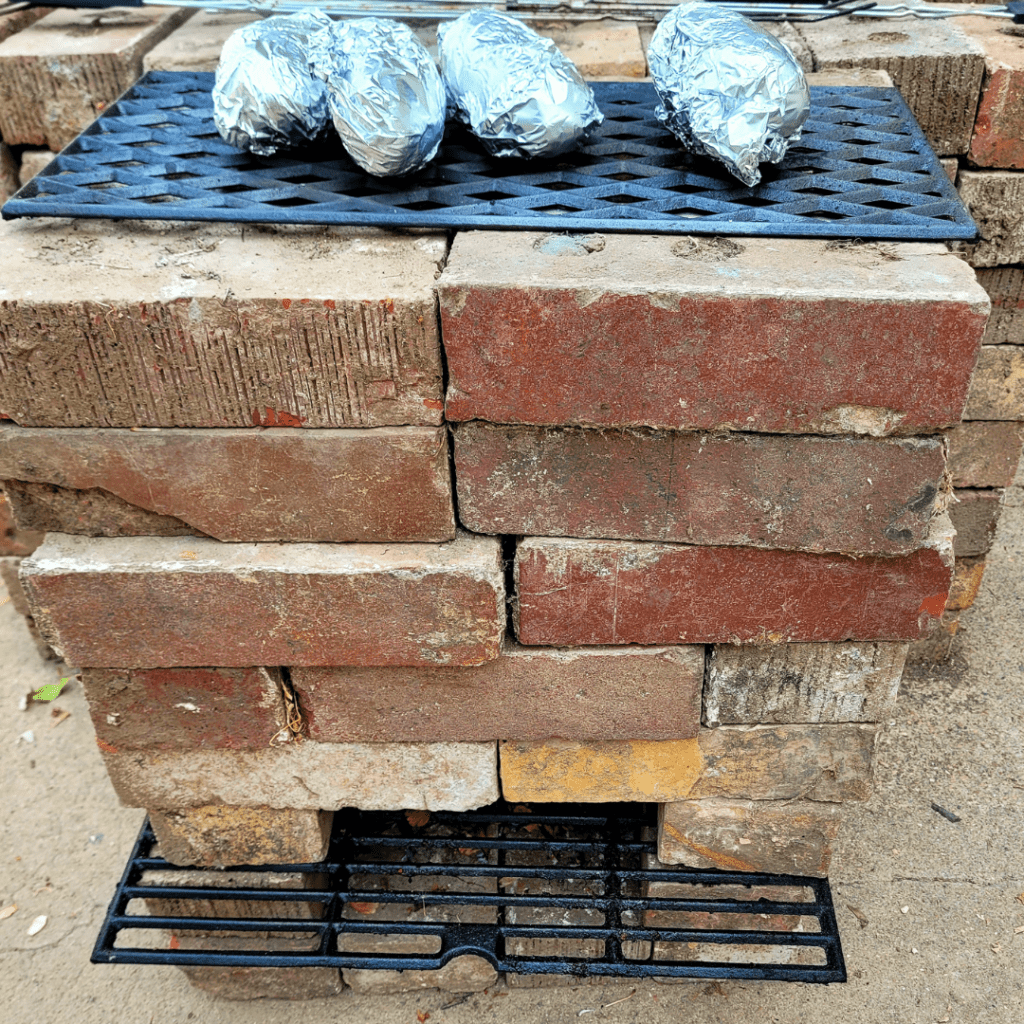Ideas for backpacking meals.
Backpacking is the ultimate test of endurance and resourcefulness! As you venture into the great outdoors, leaving the comforts of civilization behind, proper nourishment becomes a top priority. After all, you’ll need plenty of energy to conquer those rugged trails and summit those breathtaking peaks. But let’s be real, lugging around a week’s worth of canned goods is hardly practical (or enjoyable) when you’re carrying everything on your back!
But don’t worry, fellow adventurers! This blog post is your ultimate guide to backpacking meals that are not only lightweight and easy to pack, but also deliciously satisfying. From dehydrated delights to one-pot wonders, I’ll explore a variety of options to fuel your outdoor escapades. And let’s not forget about those tasty trail snacks that’ll keep you going strong, even on the most strenuous hikes.
But it’s not just about the food itself – I’ll also share expert tips on meal planning, portioning, and responsible food handling to ensure your backpacking trip is both nourishing and eco-friendly. So, get ready to discover the best ways to prepare, cook, and savor your meals while embracing the beauty of the great outdoors!
This is a pinnable post. Tap or hover over any image in this post to pin to your Pinterest Boards.
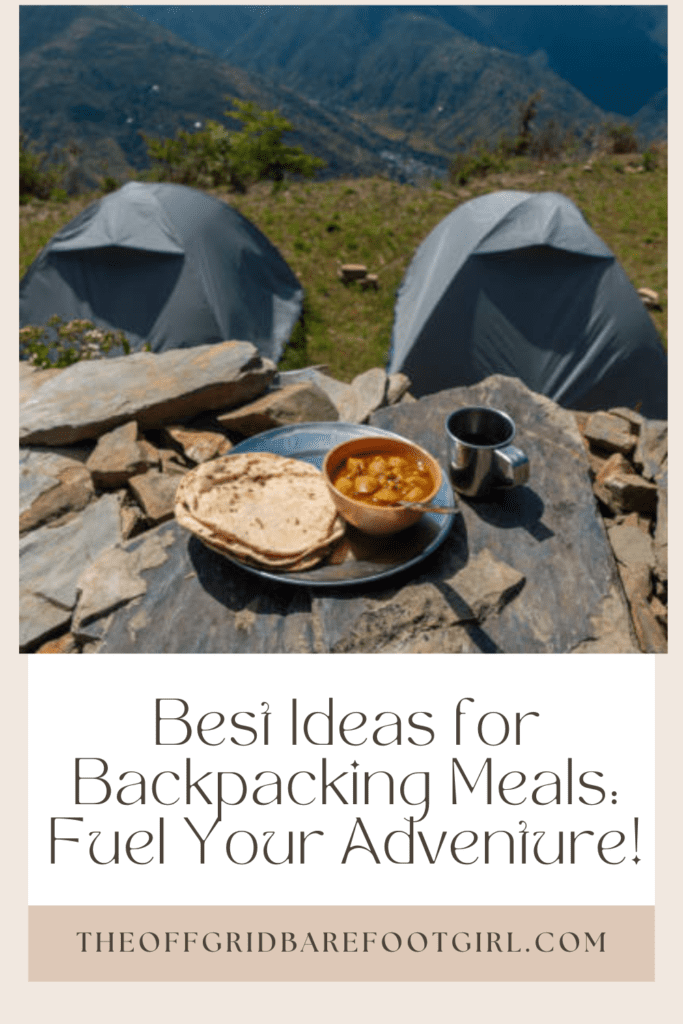
Lightweight and Nutrient-Dense Options
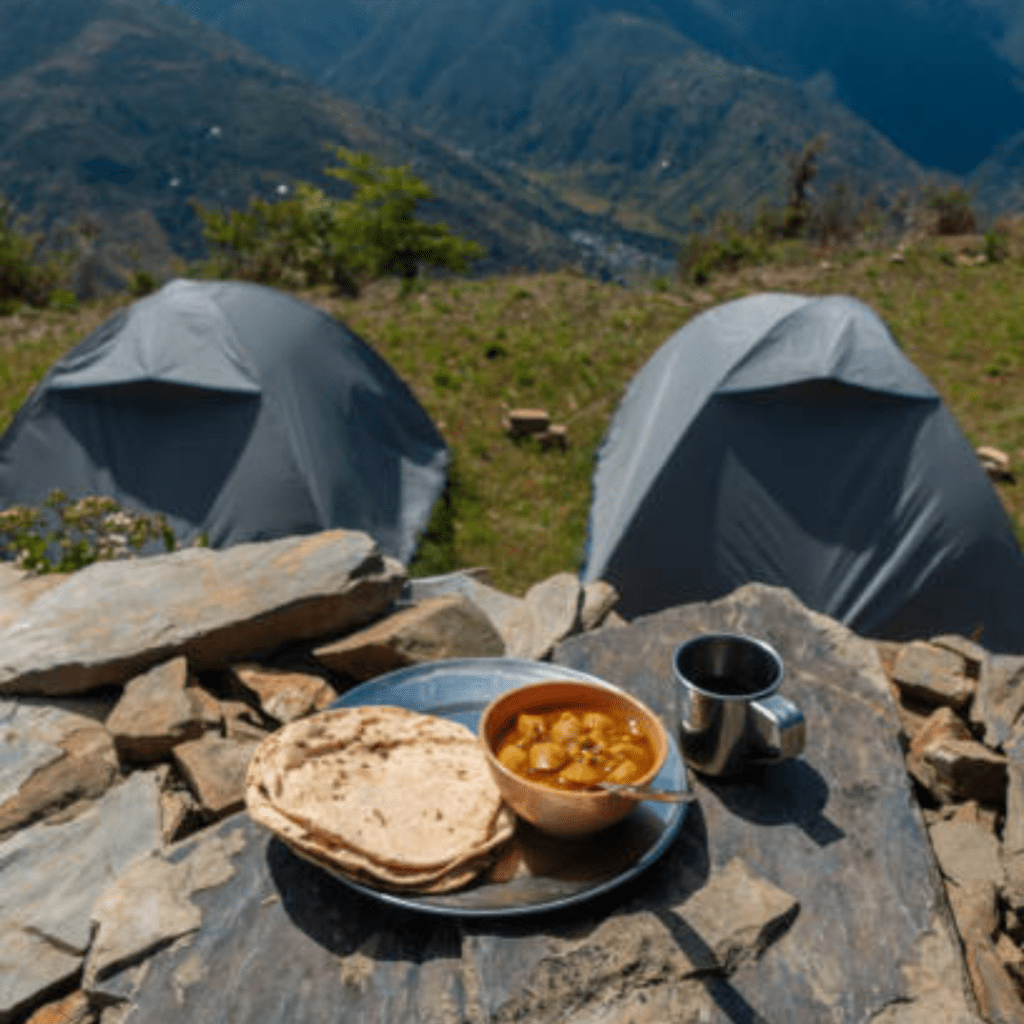
When backpacking, every ounce counts, so it’s essential to choose meals that are lightweight yet packed with the nutrients you need to fuel your adventures. The dehydrated and freeze-dried meals are excellent options, as they weigh very little but can be rehydrated with hot water to create a hearty and satisfying meal.
Dehydrated Meals
Dehydrated meals are a backpacker’s best friend. They’re incredibly lightweight, easy to prepare, and can be tailored to suit various dietary preferences. Many outdoor brands offer a wide range of dehydrated meals, from classics like beef stew and chili to vegetarian and vegan options. You can also try dehydrating your favorite meals at home, which allows you to control the ingredients and portion sizes.
Freeze-Dried Meals
Freeze-dried meals are another fantastic choice for backpackers. They’re lightweight, have a long shelf life, and require minimal preparation – just add hot water and let it rehydrate. Many freeze-dried meals are designed specifically for outdoor enthusiasts, with high-calorie counts and a balanced mix of carbohydrates, proteins, and fats to keep you energized on the trail.
Snacks and Trail Mixes
In addition to your main meals, it’s crucial to pack nutrient-dense snacks and trail mixes to keep your energy levels up throughout the day. Opt for items like nuts, seeds, dried fruits, jerky, and energy bars, which provide a combination of healthy fats, proteins, and carbohydrates.
“The key to successful backpacking is striking the right balance between weight and nutrition. With lightweight and nutrient-dense meals, you can fuel your body without weighing down your pack.” – Experienced Backpacker
Remember, proper nutrition is essential for maintaining your energy levels and overall well-being on the trail. By choosing lightweight and nutrient-dense options, you can enjoy delicious and satisfying meals while keeping your pack weight to a minimum.
One-Pot Wonders
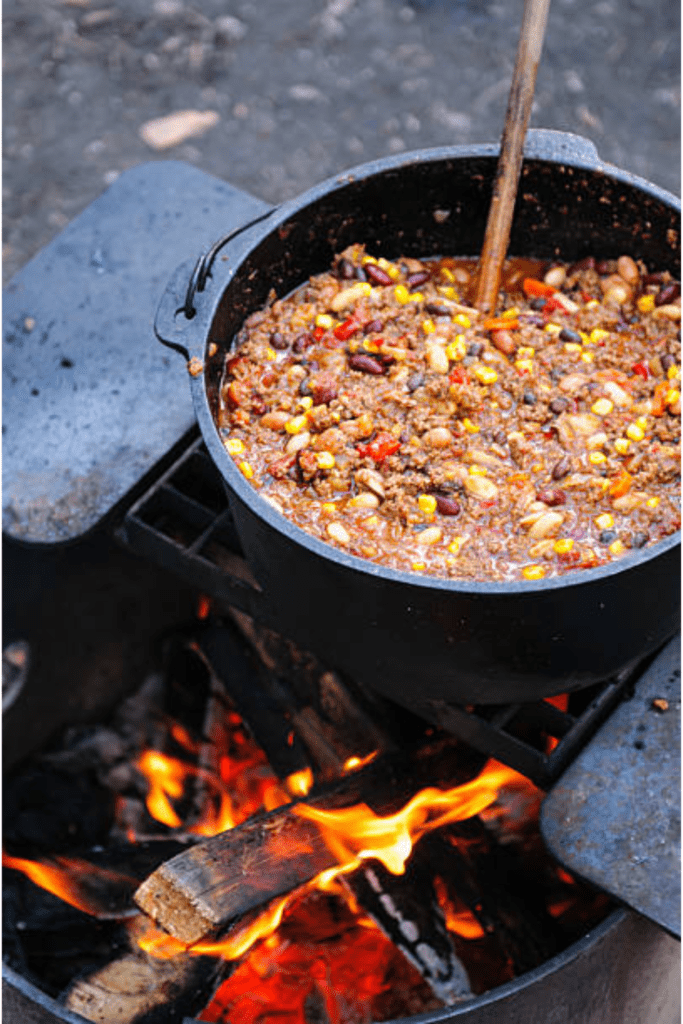
One-pot meals are a backpacker’s best friend for their simplicity, minimal cleanup, and delicious flavors. These versatile dishes are cooked in a single pot or container, making them ideal for camping trips where cooking space and resources are limited.
Hearty Stews and Chilis
Stews and chilis are perfect one-pot wonders. They’re packed with protein, vegetables, and flavor, and can be easily customized to suit your taste preferences. Consider a classic beef or vegetarian chili, or a hearty lentil or bean stew. The best part? You can prepare most of the ingredients at home, then simply rehydrate and heat on the trail.
Tasty Pasta Dishes
Who doesn’t love a comforting pasta dish after a long day of hiking? Opt for quick-cooking options like ramen or mac and cheese, or get creative with dehydrated veggies and protein sources like tuna or chicken. For an extra flavor boost, bring along a small packet of your favorite spice blend or sauce mix.
Savory Rice Bowls
Rice dishes are another excellent one-pot option. From classic rice pilafs to hearty jambalaya or Spanish rice, these meals are both satisfying and easy to prepare. Dehydrated or freeze-dried ingredients make it simple to create a flavorful, nutrient-dense meal in a single pot.
No matter which one-pot wonder you choose, the key is to plan ahead and pack wisely. With a little creativity and some well-chosen ingredients, you can enjoy delicious, filling meals that will fuel your adventures without the hassle of complex cooking setups or extensive cleanup.
Trail-Ready Snacks and Energy Boosters

When setting out on a backpacking adventure, having the right snacks and energy boosters can make all the difference in sustaining your energy levels and enjoying the journey to the fullest. These portable, nutrient-dense treats not only provide a quick source of fuel, but also offer a delightful taste sensation amidst the great outdoors.
Nuts and Trail Mixes
Packed with healthy fats, protein, and a variety of nutrients, nuts and trail mixes are a backpacker’s best friend. Almonds, cashews, and mixed nuts offer a satisfying crunch and a long-lasting energy boost. Combine them with dried fruits, seeds, and a sprinkle of dark chocolate for an irresistible and nourishing snack.
Nature’s Eats Nuts for Energy Mega Trail Mix, Oz Assorted 16 Ounce
Energy Bars and Bites
Energy bars and bites are convenient and easy to pack, making them a go-to choice for backpackers. Look for options that are high in protein, complex carbohydrates, and fiber to keep you feeling full and energized. Opt for bars with minimal added sugars and choose from a variety of flavors.
Jerky and Dried Fruits
Jerky, a protein-packed snack, is a fantastic option for backpackers seeking a savory treat. Choose lean varieties like turkey or beef jerky for a satisfying and long-lasting energy boost. Complement it with dried fruits like apricots, mangoes, or apple chips for a burst of sweetness and added nutrients.
Nut Butter and Whole Grains
For a heartier snack, consider packing whole-grain crackers or bread with nut butter like peanut or almond butter. These nutrient-dense combinations provide a balanced mix of proteins, healthy fats, and complex carbohydrates to fuel your adventures.
Remember, proper hydration is also crucial when backpacking. Stay hydrated by carrying plenty of water or electrolyte-replenishing drinks to complement your trail-ready snacks and energy boosters.
Meal Planning and Portioning
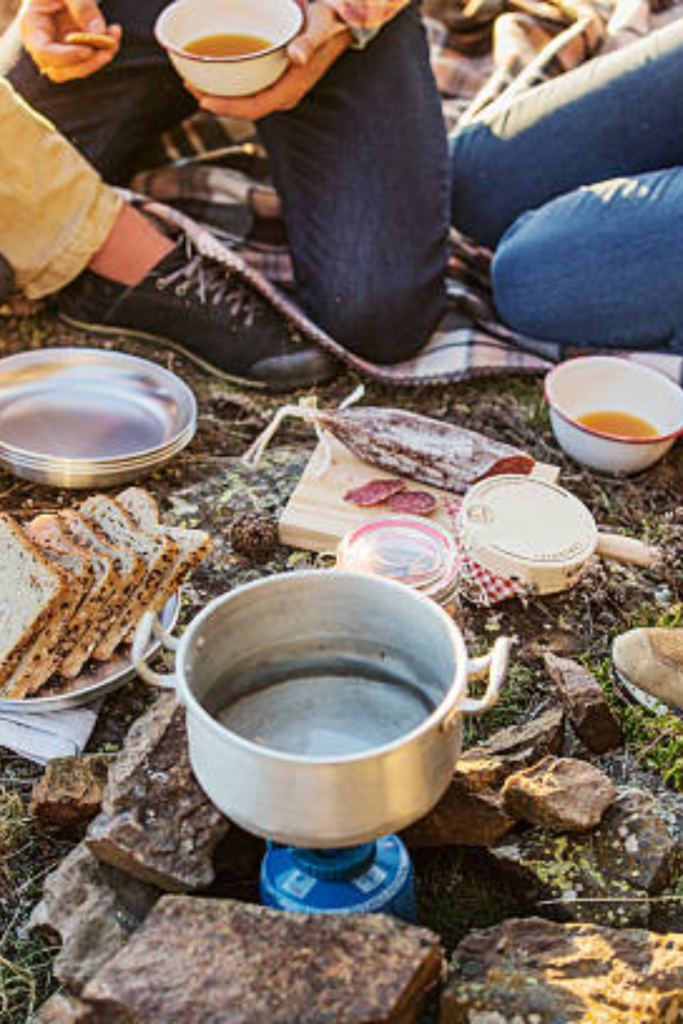
When backpacking, proper meal planning and portioning are crucial for ensuring you have enough fuel to sustain your adventure while keeping your pack weight manageable. Remember to have enough for the journey back! Here’s what you need to know:
Meal Planning
Planning your meals in advance is key to avoiding overpacking or running out of food. Start by determining your daily calorie needs based on the intensity of your hike and the duration of your trip. Then, create a meal plan that provides the right balance of carbohydrates, proteins, and healthy fats to keep you energized.
Consider dehydrating or vacuum-sealing your meals to reduce weight and bulk. This also allows you to prepare your favorite home-cooked meals in advance, ensuring you’ll enjoy your backpacking cuisine.
Portioning
Proper portioning not only helps you manage your food supply, but also reduces waste and excess weight. Here are some tips:
- Use reusable containers or bags to portion out your meals and snacks. This makes it easier to grab and go, and you can reuse the containers throughout your trip.
- Measure out portions carefully before your trip, and consider marking the containers with the meal and serving size.
- For group trips, assign each person specific meals or snacks to carry, ensuring an even distribution of weight and responsibility.
Thoughtful meal planning and portioning will ensure you have the right amount of nourishing food to fuel your backpacking adventure without carrying unnecessary weight. With a little preparation, you can enjoy delicious and satisfying meals on the trail.
Cooking Techniques for Backpacking
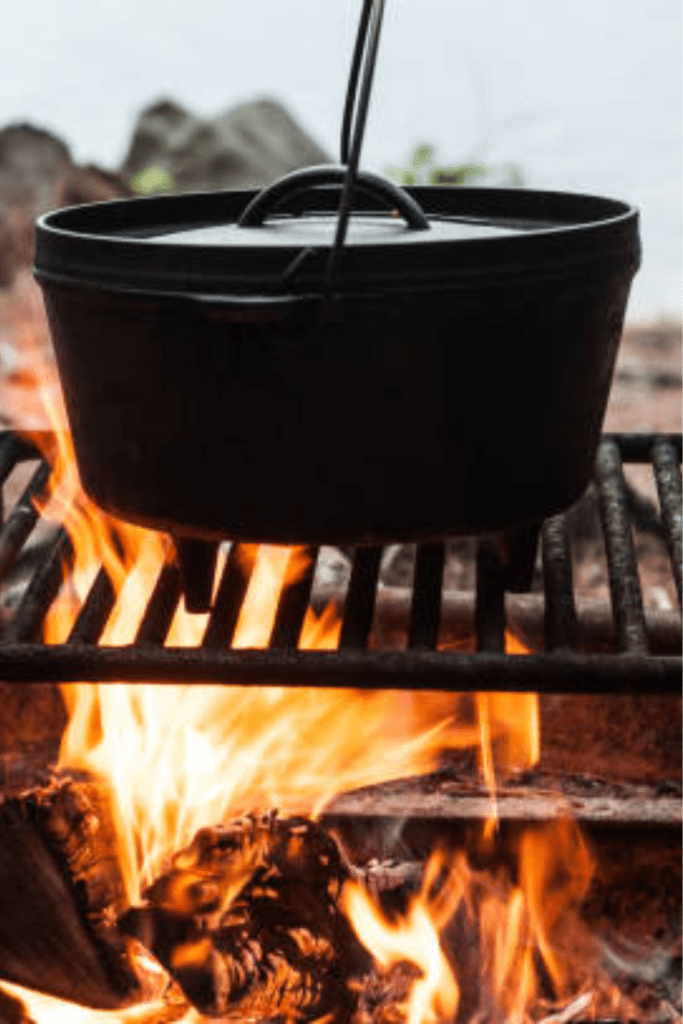
When it comes to backpacking meals, cooking techniques play a crucial role in ensuring not only the taste, but also the efficiency and convenience of your outdoor dining experience. Here’s a rundown of some popular cooking methods to consider:
Stove Cooking
For those who prefer a more traditional cooking experience, a compact backpacking stove is a viable option. Whether it’s a canister stove or a lightweight alcohol burner, these stoves allow you to cook fresh meals on the trail. Just remember to pack the necessary fuel and follow proper safety precautions.
Camp Stove Cooking
If you’re car camping or backpacking with a larger group, a camp stove can be a game-changer. These more robust stoves offer increased cooking power and stability, allowing you to whip up more elaborate meals with ease to help get everyone fed.
Campfire Cooking
There’s something undeniably satisfying about cooking over an open campfire. From grilling skewers to baking in a Dutch oven, campfire cooking adds a rustic charm to your outdoor culinary experience. Just be mindful of local fire regulations and practice proper fire safety.
No-Cook Meals
Sometimes, the simplest option is the best. No-cook meals, such as trail mixes, cold soaks, or wraps, require little to no preparation and can be a refreshing alternative to hot meals, especially during hot weather or when you’re short on time.
No matter which cooking technique you choose, remember to pack the necessary cooking utensils, fuel, and ingredients to ensure a successful and enjoyable backpacking meal experience.
I wrote an article on how to master campfire cooking with the best stoves and kits you can bring on all of your outdoor adventures.
How to Master Campfire Cooking: Best Stoves and Kits
Leave No Trace: Responsible Food Handling
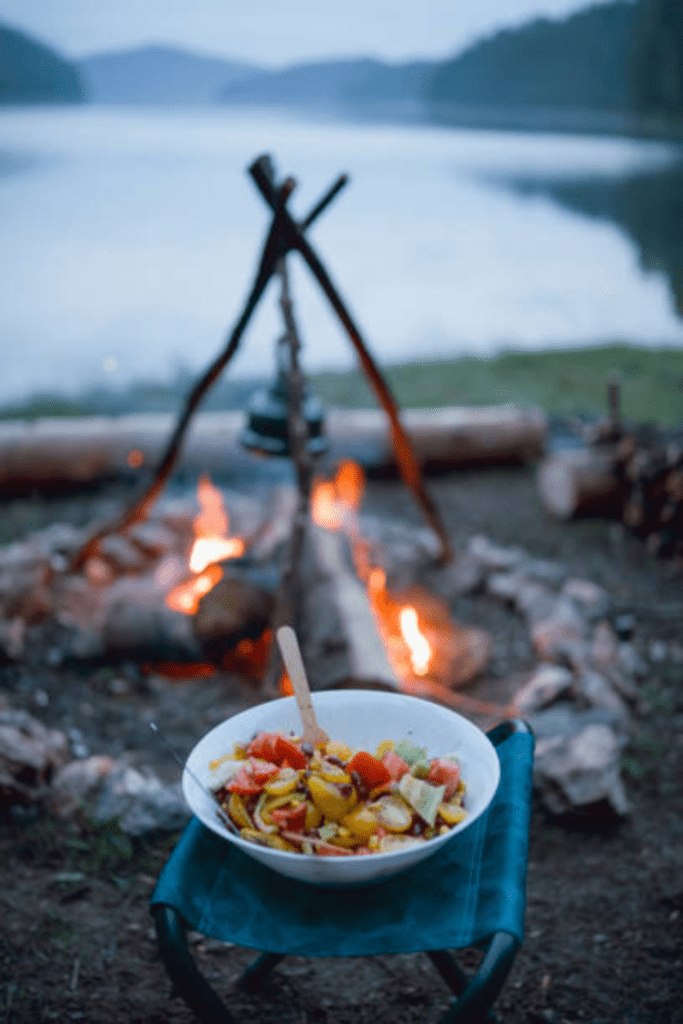
When backpacking, it’s essential to practice responsible food handling to minimize our impact on the environment and preserve the natural beauty of the trails for future generations. The “Leave No Trace” principles emphasize the importance of proper food storage, preparation, and waste disposal to protect wildlife and maintain a pristine wilderness.
Proper Food Storage
Proper food storage is crucial to prevent the attraction of wildlife and potential encounters. Always store your food securely in bear-resistant canisters or hang it from a designated bear pole or cable system. Never leave food or scented items in your tent, as the smell can attract curious critters.
Cooking and Meal Preparation
When preparing meals, use a portable stove and cook at least 200 feet (70 adult steps) away from water sources, trails, and campsites. This helps prevent contamination and minimizes the impact on the area. Avoid using soap to clean dishes, as it can pollute water sources. Instead, use a small amount of hot water and a biodegradable scrub pad.
Waste Disposal
Pack out all your food waste, including crumbs, peels, and leftovers. Use a sealable bag or container to store the waste until you can properly dispose of it in a designated trash or recycling facility. Burying or burning food waste is not recommended, as it can attract wildlife and contaminate the soil or air.
By following these responsible food handling practices, we can help preserve the natural beauty of the trails and ensure that future backpackers can enjoy the same pristine wilderness experience. Remember, the goal is to leave no trace and minimize our impact on the environment.
Conclusion
As you set out on your next backpacking adventure, remember to fuel your body with the right foods. From lightweight and nutrient-dense options to dehydrated and freeze-dried meals, there’s no shortage of delicious and practical choices. Embrace the joy of one-pot wonders and pack a variety of trail-ready snacks to keep your energy levels high. Proper meal planning and portioning will ensure you have just the right amount of sustenance while leaving no trace principles that will help you enjoy the great outdoors responsibly.
Backpacking meals are more than just fuel – they’re an opportunity to savor the flavors of the trail and create lasting memories. Share your favorite recipes and meal ideas with fellow adventurers, and keep exploring new culinary possibilities that will elevate your outdoor experience. With the right mindset and preparation, every bite will be a celebration of the journey ahead. Bon appétit, and happy trails!
Planning ahead for meals is essential when living off the land—learn more in How to Live on Raw Land.
Resources: Here are some helpful resources for further information.
- 63 Easy Backpacking Food Ideas – By Fresh Off The Grid (I love this website!)
- The 7 Best Backpacking Meals of 2024, Tested & Reviewed – By Serious Eats
- DIY Backpacking Food – By Backpacking Chef
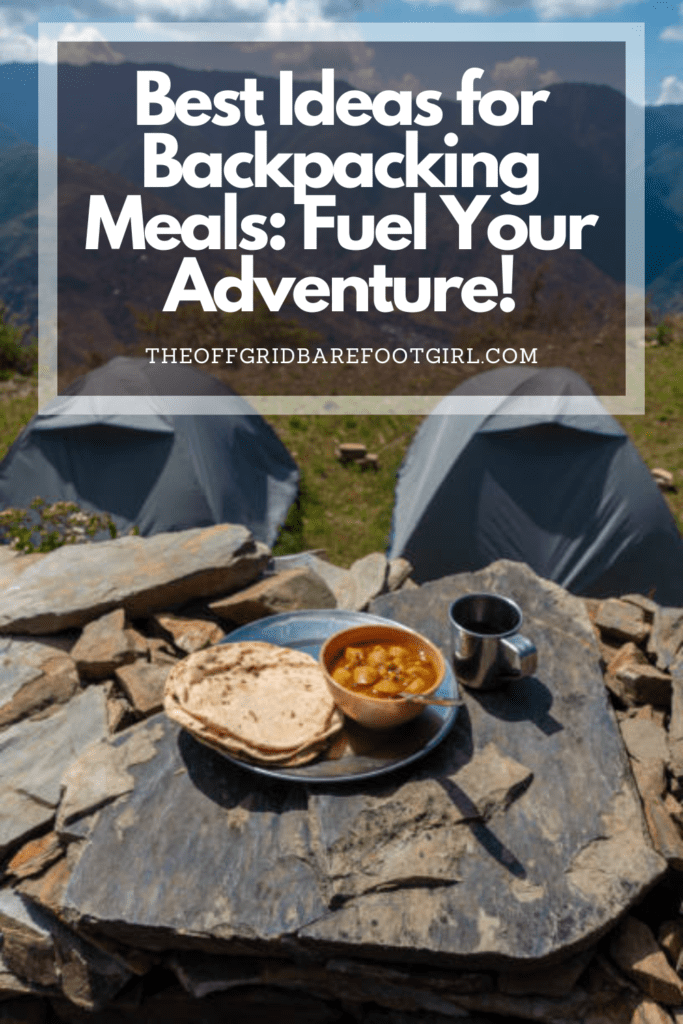
Frequently Asked Questions
1. What should I look for in backpacking meals?
Look for meals that are lightweight, easy to prepare, nutritious, and have a long shelf life. Consider options that require minimal cooking and can be prepared with just boiling water.
2. Can I prepare backpacking meals in advance?
Yes, many meals can be prepared ahead of time. Dehydrate cooked meals like pasta and stews, and store them in airtight bags for easy packing and quick preparation on the trail.
3. What are some good high-energy snacks for backpacking?
Great high-energy snacks include trail mix, energy bars, jerky, and dried fruits. These snacks are lightweight, nutrient-dense, and provide a quick energy boost.
4. How do I keep my backpacking meals safe and hygienic?
Ensure food safety by using airtight containers, cleaning cooking gear regularly, using purified water for cooking and drinking, and practicing good hand hygiene.
Summary
I hope I have inspired you to help you prepare your survival skills with these helpful tips and products. Here are some other links you may be interested in reading!
End Times Headlines: How Prepared Are You Really?
Hiking the High Desert: Survival Tips You Should Never Ignore!
SHTF Planning: How to Survive the High Desert Bootcamp!
Survival Skills Training: Into the Backwoods with a Master Survivalist!
Choosing the Best Survival Cooking Kit: The Ultimate Guide
Survive the Peaks: The Best Avalanche Gear on the Market!
Bug In and Survive a Grid Down: Survival Training Course!
Bugout Bags and Survival Training Course with Grid Down Consulting!
Get These Vital Emergency Survival Equipment Now!
Bartering: How To Negotiate Commodities with Astonishing Results!
Warning: Why You Need Whole Home Water Purification Now!
How to Design Off Grid Power Systems for Your Homestead
How Many Watts Does a Fridge Use? Energy Efficient Guide
The Best States for Off Grid Living: Unplugged and Thriving
Composting Toilet Systems Are Surging: Ditch Your Septic Tank Now!
Are Greywater Tanks the Key to Sustainable Living? Find Out Now!
How to Live Off-Grid: 11 Tips to Survive and Thrive!
Are Survival Food Kits Worth It? The Truth Revealed!
Do You Really Need Faraday Bags? The Shocking Truth Revealed!
The Best Doomsday Preppers Blogs to Follow Now Before SHTF!
The Ultimate Camping Gear Checklist: Everything You Need for an Adventure
The Ultimate Spring Cleaning House Checklist: Deep Clean with Me!
How Supporting Farmer’s Markets Makes a Difference
Eco-Friendly Christmas: How to Have an Eco-Friendly Christmas
How to Winterize Your Home: Prepare for Jack Frost’s Wrath!
Proven Hacks to Make Your Christmas Tree Survive
What Thanksgiving Teaches Us About Survival
Homeless Survival Hacks to Overcome Adversity
More Self-Sufficiency Posts!
Is Your Car Ready for Winter? The Ultimate Checklist for Your Winter Emergency Car Kit
What The Walking Dead Can Teach Us About Survival: The Walking Dead Survival Tactics
Get Lockdown Ready: Best Dollar Tree Survival Items
Understanding Water Purification Methods for Survival: Best Practices Explained
Thirsty for Survival: Expert Guide to Emergency Water Prep Tactics
The Benefits of Urban Homesteading: Revolutionize Your City Life
Practical Pantry Prepper: Essential Guide
How to Grocery Shop Once a Month
What Should Be in A 72-Hour Survival Kit?
Buy or Die: Prepper Items You Need Now
How to Learn 58 Self-Sufficient Skills Right Now
Road to Self-Sufficiency: How to Start Your Journey
If you were encouraged by this post, I invite you to check out my FREE Printables Page for fun free printables, planners, and charts.
ENTER MY FREE Printables Page HERE
Blessings,
The Off Grid Barefoot Girl

